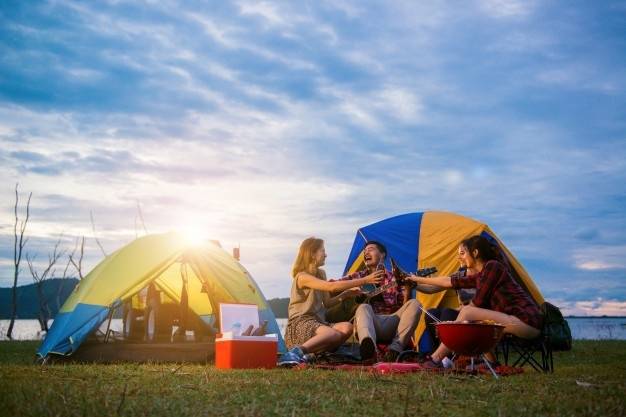Camping trips are all about exploration, adventure, and fun, but it’s vital to have enough water on hand. Ensuring you have a suitable water container for your needs can make all the difference in your experience.
Why Water Containers Are Crucial for Camping
Imagine being in a remote location without an adequate water supply. That’s why a robust and ample water container is a must. Even if your campsite provides drinking water, it’s always wise to carry your own – better safe than sorry!

Best Camping Water Container Options
Below are some of the top water container options for various camping needs. Let’s dive into the details!
1. Reliance Products Aqua-Tainer 7-Gallon Water Container
Pros:
- Excellent quality
- Reliable
- user-friendly
- suitable for camping
- ensures safe water.
Cons:
- May leak.
Summary: This container offers a large 7-gallon capacity and is easy to use, thanks to its reversible spigot. Perfect for camping but not for backpacking.
2. Coghlan 5-Gallon Collapsible Water Container
Pros:
- Budget-friendly
- Portable
- easy to operate.
Cons:
- May leak.
Summary: A fantastic option for day trips and hiking, it can hold 5 gallons of water and is made from food-grade plastic.
3. Arrow Home Products Slimline Beverage Container
Pros:
- High flow rate
- Affordable
- Easy to use.
Cons:
- The filter is not built-in.
Summary: A quality build container with a 2-gallon capacity, effective at reducing bacteria and odors.
4.WaterBrick 1833-0001 Water Container
Pros:
- Flexible hose
- high flow rate
- slim design.
Cons:
- The hose may twist.
Summary: Versatile for various trips with a special hose for easy connection.
5. Igloo Corporation 42154 Water Container
Pros:
- Compact design
- Affordable
- Easy to clean.
Cons:
- The vent plug doesn’t lock.
Summary: It carries up to six gallons and has a built-in pouring spout.
6. WaterStorageCube Collapsible Water Container Bag
Pros:
- BPA, PVC, and DEHP-free
- Freezer-friendly
- 1-year warranty.
Cons:
- Small capacity
- Won’t stand on its own
- Difficult to pour.
Summary: Excellent for camping, these containers are one of the most portable options, though they have some pouring challenges.
Buyer’s Guide: Selecting the Ideal Camping Water Container
Understanding Your Water Container Needs
Choosing a camping water container doesn’t have to be confusing. This guide will help you make an informed decision based on your needs.
Capacity and Size
The right size depends on your requirements. In emergencies, larger containers are essential. For standard usage, a 2-7 gallon container may suffice.
Collapsible vs. Hard-Shell
Hard-shell containers are stackable and durable, but heavy. Collapsible containers are lighter and more portable but can be punctured easily. Consider your needs and choose accordingly.
Spigots and Leak Points
Look for containers with rubber gasket seals to avoid leaks. Side fixtures are great for pouring but may cause a mess if not securely closed.
Cleaning
Choose water tanks with bigger openings for easy cleaning.
Material and Build
Opt for plastic containers as they are usually lightweight and cost-effective. Ensure they are food-grade and BPA-free for safety.
Price Point
There are various price options available, from basic to premium. Choose according to your budget and requirements.
Calculating Your Water Needs for Camping
For daily drinking during camping, at least 1/2 gallon (2 liters) is required. Factor in additional water for cooking and washing, and you may need 3-3.5 gallons (11-13 liters) per person per day. In hot climates, up to 4 gallons/person/day (15 liters) might be necessary. Use the formula below for estimation:
Water (in gallons) = 3.5 x # People x # Days
Where to Fill Your Camping Water Container
You can find free water at visitor centers, dump stations, beaches, parks, paid campgrounds, and even grocery stores.
Verdict: Find Your Perfect Water Container
Choosing the best water container depends largely on your needs and preferences. Refer back to our guide and product list to find your ideal container. Happy camping and stay hydrated!

Jay
Jay is a health and wellness enthusiast with expertise in water quality and nutrition. As a knowledgeable advocate for holistic well-being, Jay successfully manages Type 2 Diabetes through informed lifestyle choices. Committed to sharing reliable and authoritative insights, Jay combines firsthand experience with a passion for enhancing health."






